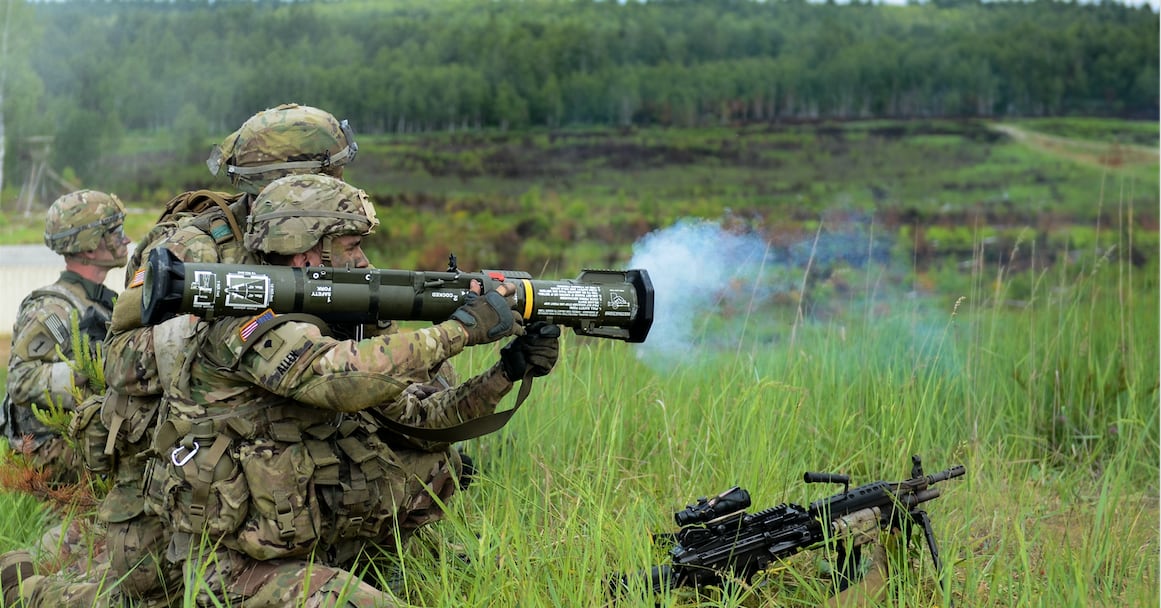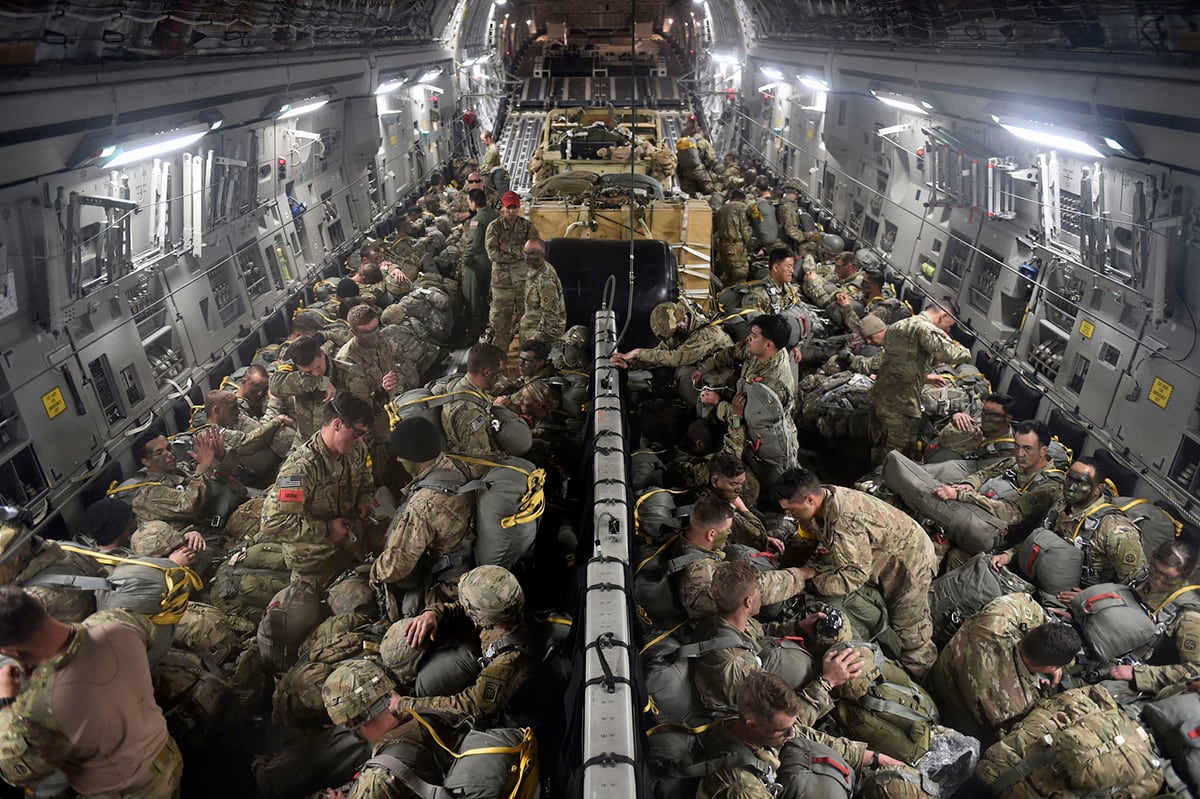WASHINGTON — President Donald Trump’s recent talk of drawing down U.S. forces and missions overseas comes as Congress is preparing another big increase in military end-strength next year, a seemingly contradictory set of policy planning.
But supporters of the plus up, including a number of key lawmakers, say adding more troops to the ranks has more to do with filling more subtle gaps in the Defense Department than increasing or sustaining a broad global strategy. In many cases, the extra bodies could mean fully staffing units for the first time in years.
“Hopefully we’re creating more time for dwell and deploy cycles, more time for training exercises,” said Fred Bartels, policy analyst for defense budgeting at The Heritage Foundation. “You’re building more internal capacity. Even if we were to draw down folks from overseas, you still have units that need to be ready to go.”
Earlier this year, as part of the fiscal 2019 budget plan, the White House requested a boost of 15,600 troops across the four services as part of an effort to “rebuild” military capabilities. It comes after end-strength increases of more than 25,000 service members in the previous two years, after a stretch of personnel trims the years before.
RELATED

Trump had made the service-member boosts a key part of his presidential campaign and a repeated refrain during his first year in office. But he has also repeatedly lamented the burden on U.S. military forces worldwide, asserting that America spends too much money on security operations overseas that don’t directly impact U.S. interests.
Last month, following a meeting with North Korean leader Kim Jong Un, Trump announced he would cancel upcoming military exercises with South Korea — saving “a fortune” which Pentagon officials later estimated at $14 million — and suggested he would like to start discussions on withdrawing tens of thousands of U.S. troops from that region in coming years.
Last week, the Washington Post reported that Trump has requested an analysis of the national security impact and cost savings of a separate large-scale withdrawal of U.S. forces from Europe.
RELATED

When asked about that during this week’s NATO summit, Trump responded instead that “I have great confidence that (allies) will be spending more money, as they should be.”
The reports have raised concerns among a number of congressional Democrats who have already criticized Trump for his rhetoric not matching his national security strategy.
“I’m worried with Trump alone in a meeting with (Russian President Vladimir) Putin, he may offer to draw down another number of troops in Europe,” said Sen. Richard Blumenthal, D-Conn., a member of the Senate Armed Services Committee.
“What we need is an overall strategy that takes account of our end-strength all over the world, and I don’t see any indication of a comprehensive strategy.”

Todd Harrison, director of defense budget analysis at the Center for Strategic and International Studies, said the troop number confusion “clearly shows some major disconnects, even within parts of the administration.” He noted the new National Defense Strategy omitted end-strength counts altogether, even though it was a staple of past planning documents.
“I think we’re seeing a lot of lawmakers in denial here,” he said. “They want to grow the force, have been pushing for that, but are ignoring (Trump’s) comments on reducing security missions because it doesn’t fit with their goals.”
But advocates for the end-strength boost say the confusion around Trump’s long-term plans doesn’t change the reality of personnel gaps in the services today. The suggested drawdowns in Europe and the Pacific aren’t firm policy yet, and could give way to increased military demands instead of reduced expectations.
“Remember what has happened over the last several years: In order to have units ready to deploy, we’ve cannibalized other units,” said Mac Thornberry, R-Texas, chairman of the House Armed Services Committee. “A lot of this end-strength increase is to fill in those holes.
“The bigger geo-strategic decisions don’t affect the need to make units whole.”
Bartles said the problem is particularly visible in the Army, where nearly two decades of increase operations tempo have created chronic understaffing problems for numerous units. Gary Schmitt, resident scholar at the American Enterprise Institute, said some rotational brigades in places like Europe have been operating at 80 percent capacity for an extended period.
“This end-strength isn’t adding whole new brigades,” he said. “They want to make sure everyone is fully manned. So no matter what the bigger policies are, they believe they’re doing the right thing in adding more troops.”
House lawmakers approved the full 15,600 troop boost in their draft of the annual defense authorization bill earlier this spring. Senate Armed Services Committee members only backed roughly half that figure, arguing that better clarity is needed on those extra troops’ roles and missions before adding the extra service members.
“We’ve been working with the department, we’re getting additional information from the Defense Department to justify the end-strength,” said Sen. Thom Tillis, R-N.C., and chair of the Senate Armed Services Committee’s panel on personnel.
“We have concerns with the out-year obligations for end-strength, but when we’ve spoken with the department, they’re working on finding resources. I’m open to that. We just have to find a way to fill those gaps.”
The two panels are now negotiating the final personnel target in the authorization bill’s conference committee. Regardless of how that work unfolds in coming days, the military is expected to see some end strength increase approved by Congress later this summer.
Leo covers Congress, Veterans Affairs and the White House for Military Times. He has covered Washington, D.C. since 2004, focusing on military personnel and veterans policies. His work has earned numerous honors, including a 2009 Polk award, a 2010 National Headliner Award, the IAVA Leadership in Journalism award and the VFW News Media award.




